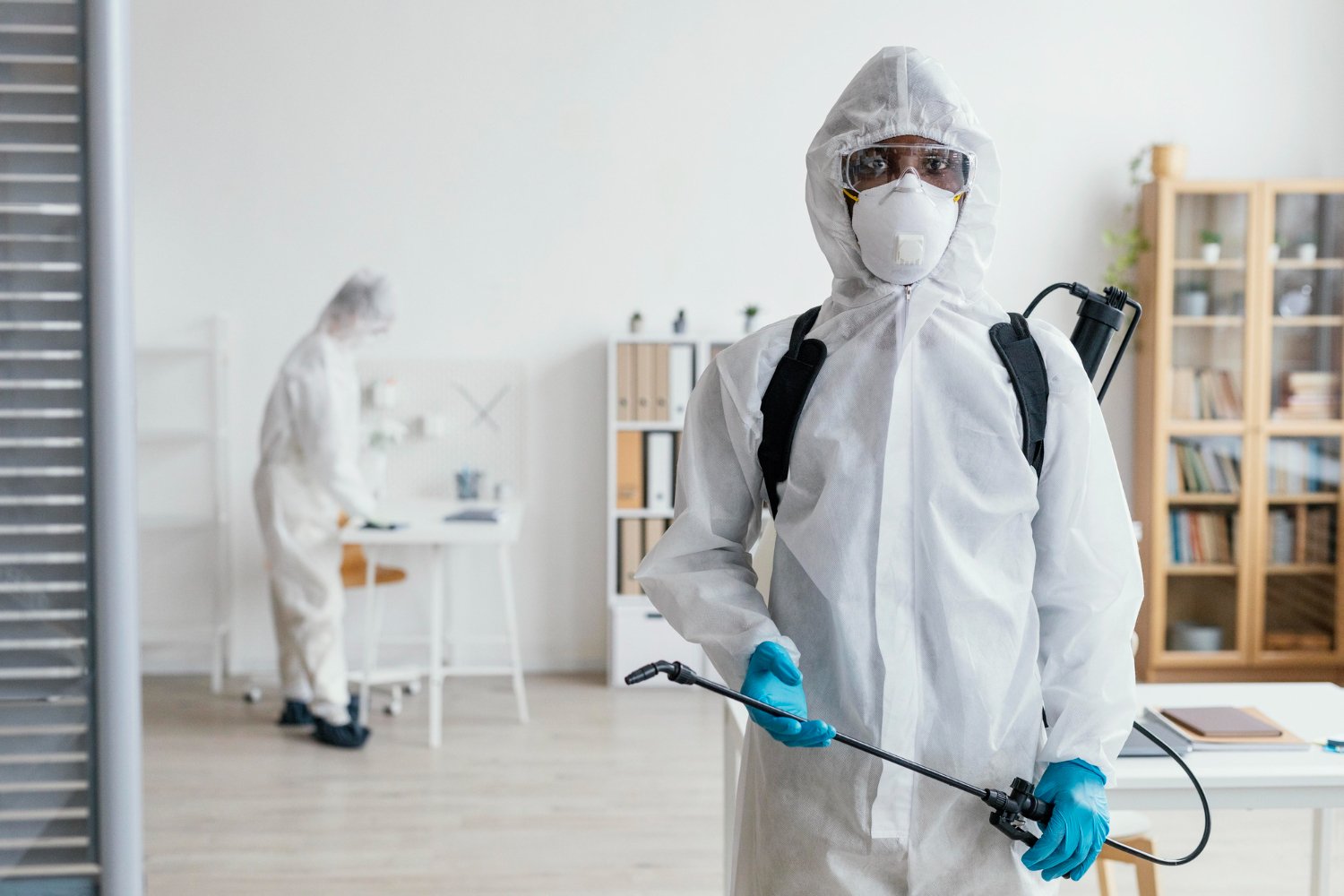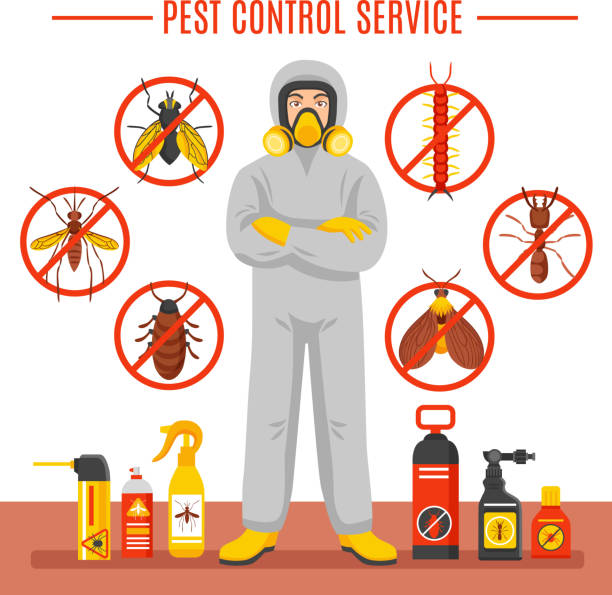Pest Control services to keep your space pest-free from unwanted pests.
Eco-Friendly Insect Control Approaches for Handling Wildlife in Urban Locations
Urban areas often locate themselves at the junction of human task and wildlife, bring about special difficulties in parasite management. Eco-friendly methods emphasize sustainable conjunction, using strategies such as environment modification and natural repellents to minimize human-wildlife problems. These approaches not only protect the atmosphere yet additionally enhance neighborhood engagement in wildlife administration. As urban populaces remain to grow, comprehending the characteristics of wild animals interactions ends up being significantly crucial. What innovative techniques can be executed to guarantee both environmental balance and city safety? Discovering this inquiry exposes a compelling landscape of potential remedies.
Recognizing Urban Wildlife Characteristics
Comprehending Urban Wildlife Dynamics is essential for developing effective and eco-friendly insect control strategies. Urban areas are increasingly ending up being habitats for various wildlife species, driven by elements such as environment fragmentation, food availability, and human infringement. Acknowledging these dynamics permits a nuanced approach to pest management that aligns with environmental principles.
Urban wild animals typically includes types such as raccoons, squirrels, and birds, which adjust to city atmospheres, discovering niches in environment-friendly spaces, parks, and even houses. Their existence can result in conflicts with people, particularly when they exploit human resources for food and shelter. Comprehending the behaviors and environmental duties of these varieties educates strategies that reduce negative interactions while promoting biodiversity.
Additionally, recognizing the interdependencies within urban ecosystems assists in identifying crucial locations for habitat conservation and repair. This expertise contributes to the advancement of incorporated parasite management (IPM) techniques that consider the environmental equilibrium, therefore decreasing dependence on unsafe chemicals. By fostering coexistence in between people and metropolitan wild animals, cities can develop much healthier atmospheres that profit both residents and local environments, paving the method for sustainable city living.
All-natural Repellents and Deterrents
Natural repellents and deterrents offer a lasting alternative to conventional parasite control techniques by utilizing the power of nature to maintain unwanted species away. These eco-friendly remedies generally use plant-based components, necessary oils, and other normally happening substances that hinder parasites without hurting the atmosphere.
One reliable all-natural repellent is peppermint oil, which is recognized to repel rodents and bugs. Its strong fragrance is unpleasant to several parasites, making it a prominent selection for metropolitan settings. In a similar way, vinegar and citrus peels can offer as deterrents, as their solid smells are typically uninviting to numerous wild animals.
Furthermore, diatomaceous earth is an all-natural powder that can be spread out in areas susceptible to bug task, properly dehydrating and hindering insects without positioning dangers to non-target species. Additionally, garlic sprays and neem oil are recognized for their capability to ward off a variety of pests, consisting of both bugs and larger wildlife.
Carrying out these natural repellents not just lowers dependence on chemical pesticides however additionally advertises a much healthier urban ecosystem, fostering a more well balanced conjunction between people and wild animals. By utilizing these techniques, city areas can successfully manage parasite populations while reducing environmental effect.
Habitat Alteration Methods
Efficient habitat modification techniques play a critical duty in sustainable bug monitoring by changing the atmosphere to make it less helpful to pest invasions. By comprehending the eco-friendly dynamics of metropolitan areas, property owners can carry out critical adjustments that prevent parasites while promoting biodiversity.
(Pest Control Services)One key method entails keeping correct sanitation. This consists of normal waste removal, protecting garbage containers, and eliminating standing water to minimize reproducing websites for pests and rodents. Additionally, landscape design methods such as choosing native plants can enhance eco-friendly balance, offering environments for useful microorganisms while reducing sources for bugs.
An additional vital strategy is to seal access factors in structures. Evaluating and fixing cracks in foundations, walls, and home windows can substantially minimize pest accessibility. Furthermore, creating physical obstacles, such as fencings or plant barriers, can inhibit wildlife movement right into human-inhabited locations.
Integrated Insect Administration Practices
Building upon habitat modification methods, incorporated bug monitoring (IPM) practices provide an all natural method to regulating insect populations while reducing environmental influence. IPM combines various approaches, including organic, social, mechanical, and chemical controls, to accomplish efficient bug management.
Organic control involves the introduction of natural killers or parasites to reduce bug populations. Cultural techniques, such as crop turning and sanitation, interfere with pest life cycles and lessen their environments - Pest Control. Mechanical controls, like traps and barriers, offer immediate alleviation from bug pressures without chemical intervention
Chemical controls are discover this made use of as a last option, focusing on targeted applications that restrict injury to non-target varieties and the setting. The option of eco-friendly pesticides, when needed, is important to the IPM structure. Additionally, monitoring bug populations and examining potential damages assists educate decision-making, guaranteeing that treatments are prompt and effective.
Area Involvement and Education

(Mouse Control)Workshops and informative sessions can furnish residents with understanding concerning indigenous types, environment conservation, and reliable non-toxic parasite management strategies. Cooperation with institutions, neighborhood organizations, and government companies better boosts educational outreach, making sure that crucial information reaches diverse audiences.
In addition, community-led efforts, such as community clean-up days and environment remediation tasks, not only promote biodiversity yet additionally strengthen area ties. Pest control service. By encouraging homeowners to share their experiences and monitorings, communities can establish targeted techniques that resolve specific regional bug problems
Incorporating feedback from homeowners right into pest monitoring intends allows a much more receptive and flexible strategy to wild animals obstacles. Ultimately, informed and engaged neighborhoods are crucial to achieving long-term success in eco-friendly pest control, leading to healthier urban atmospheres that appreciate both human and environmental requirements.

Conclusion
In conclusion, eco-friendly parasite control approaches deal sustainable services for managing city wild animals. By focusing on habitat alteration, making use of natural repellents, and implementing integrated parasite monitoring practices, areas can foster a harmonious conjunction with regional fauna.